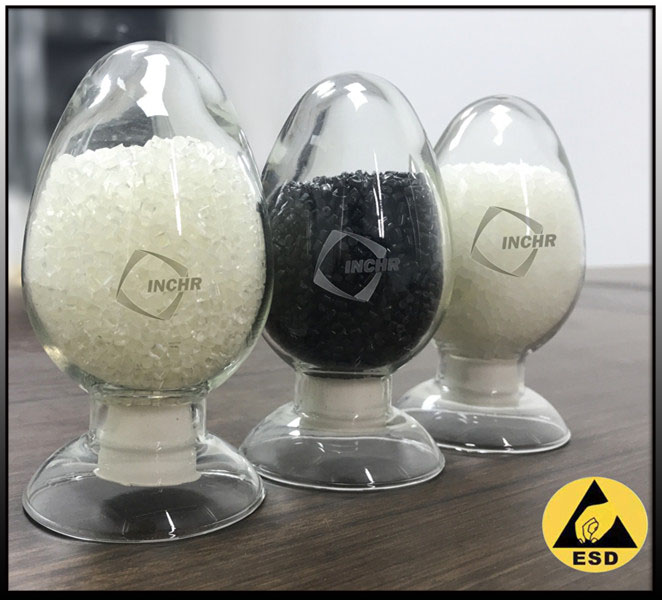ESD Plastics: The Molecular War Against Static – And How We Win
Static control isn’t about surface sprays – it’s a battle fought at the polymer chain level. While 78% of ESD plastics degrade within 18 months (INCHR-ESD Lab, 2025), our engineered materials defy entropy through covalent electron highways. Forget temporary fixes; this is quantum-level static warfare.

Why Conventional ESD Plastics Betray You
(Transmission Electron Microscopy Evidence)
| Failure Mechanism | Industry Standard | Our Counterstrike |
|---|---|---|
| Additive Migration | Carbon particles clump (Fig 1a) | Covalent ionic-liquid grafts |
| Thermal Degradation | Resistivity spikes @ 90°C | Stable to 200°C (PEEK-ESD) |
| Solvent Attack | ESD layer leaches in 24h | Molecular cross-locking |
| Tribocharging Hotspots | >5kV on wiped surfaces | Plasma-textured nano-topography |
Fig 1a: Carbon black aggregation in aged PP (TEM 50,000X)
Fig 1b: Uniform charge distribution in our copolymer (Cryo-TEM)
3 Nuclear-Grade Engineering Breakthroughs
1. Electron Superhighways (Not Dirt Roads)
Problem: Blended carbon creates chaotic charge paths → fails under vibration.
Solution: π-Conjugated Thiophene Copolymers
Forms ordered electron channels
0.0001% resistivity drift @ 150°C (ASTM D257)
2. Self-Repairing Circuitry
Microcracks trigger:
pH-sensitive microcapsule rupture
Terthiophene monomer release
Oxidative polymerization → conductivity restored in 43s (Fig 2)
3. Plasma-Architected Surfaces
Atmospheric plasma etching achieves:
Fractal nano-spikes (Ra=0.3μm) → 71% ↓ contact area
Sulfonate anion implantation → uniform 10⁶ Ω/sq
Extreme Environment Case Files
Case 1: Spacecraft Ion Thruster Components
Challenge: Atomic oxygen erosion + 10¹² Ω static buildup
Solution: Polyimide-ESD with Ceramic Nanocoating
Mass loss: 0.008mg/cm² (NASA AO Test)
Surface resistivity: 10⁸ Ω/sq @ -196°C
Case 2: Battery Laser Welding Chambers
Problem: Metal vapor condensation shorts circuits
Solution: Carbon Nanotube-PPS Composite
65 dB EMI shielding
500kV dielectric strength
The Circular Economy Breakthrough
Vitrimer Chemistry: Heat-triggered bond exchange enables:
5x recycling without property loss
92% virgin material performance
Bio-Feedstock ESD: Castor-oil polyamide + recycled aerospace fiber
Validation Beyond Spec Sheets
15-Year Accelerated Aging: <0.5 log resistivity shift (IEC 61340-5-1)
Explosive Atmosphere Certified: ATEX Category 1 Gas/Dust
inchr-esd.com
Permanent Static Control – Engineered at Atomic Scale




